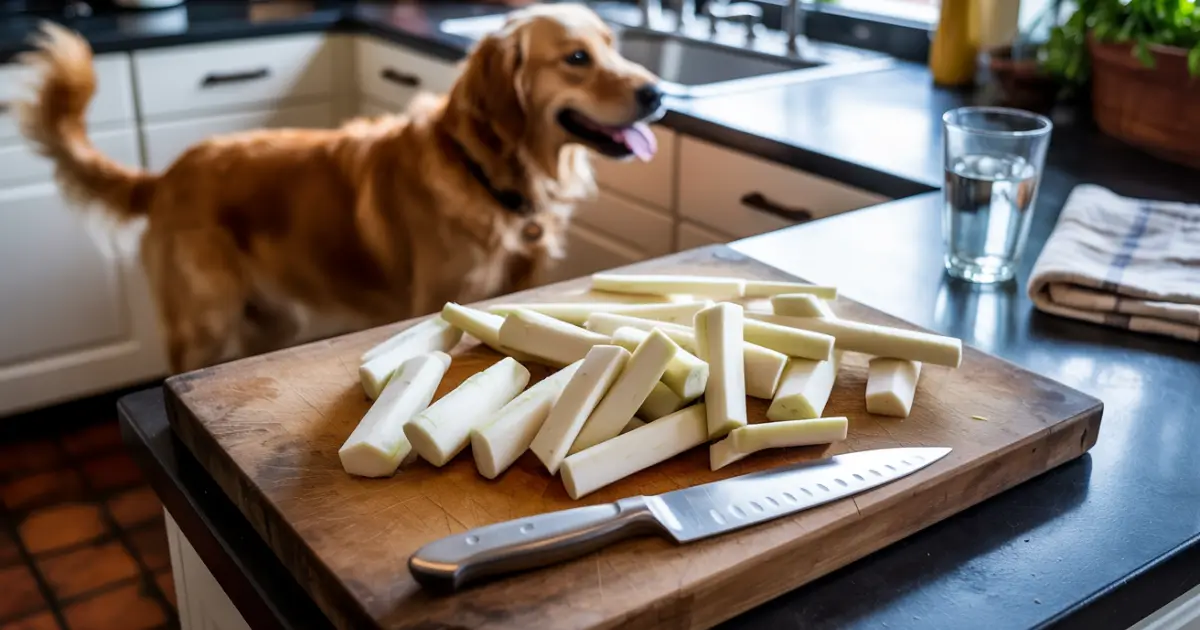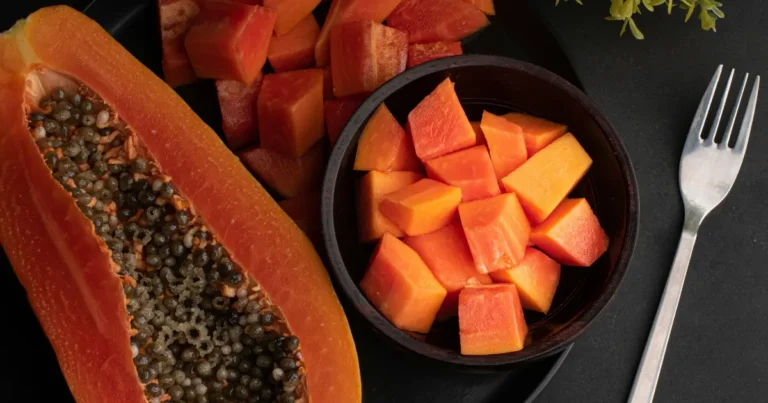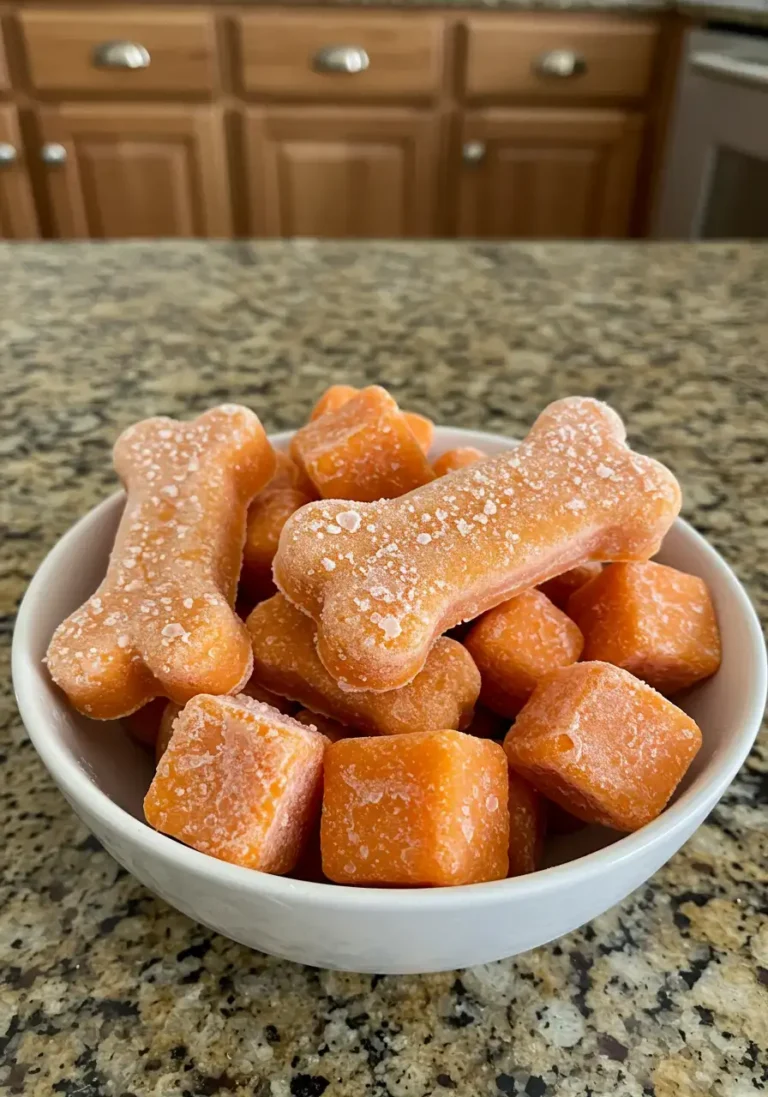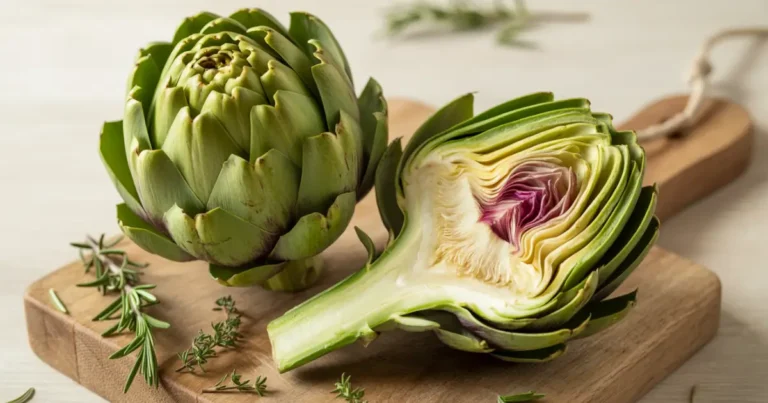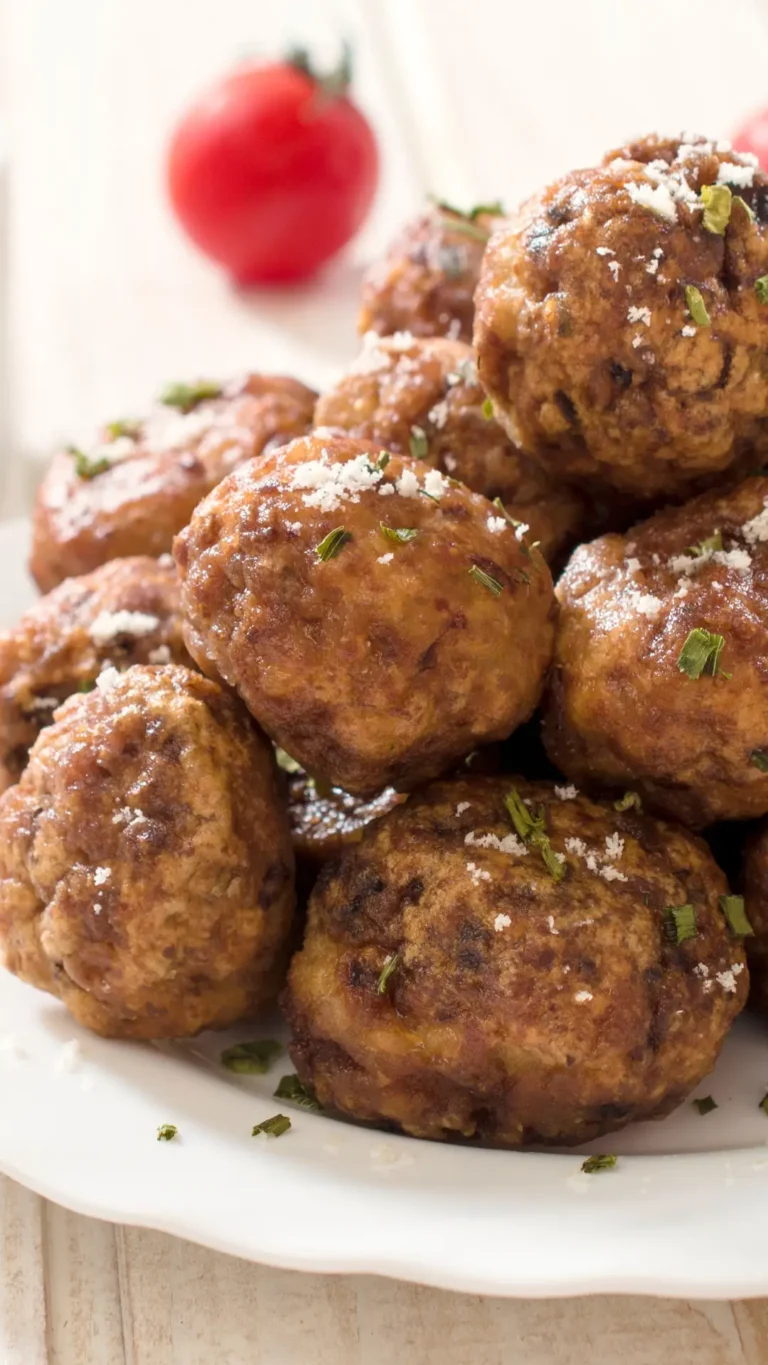Can Dogs Eat Jicama: 7 Vital Healthy Benefits & Tips
If you enjoy the crisp, refreshing crunch of jicama in your salads or as a healthy snack, you might wonder: Can dogs eat jicama too? This root vegetable, sometimes called Mexican turnip or yam bean, has grown in popularity as a nutritious, low-calorie food for humans. The good news is that the flesh of jicama can be a safe and healthy addition to your dog’s diet when properly prepared and served in moderation. This comprehensive guide explores everything you need to know about jicama for dogs, including benefits, potential risks, and proper serving methods.
Table of Contents
What Is Jicama?
Before addressing whether can dogs eat jicama safely, it’s helpful to understand what this vegetable actually is. Native to Mexico and Central America, jicama is a root vegetable that is pronounced HEE-kah-mah. It grows from the Pachyrhizus erosus vine, which is a member of the bean family.
Jicama has:
- A brown, papery skin
- White, crisp flesh similar to a raw potato or pear in texture
- A mildly sweet, nutty flavor
- High water content (about 90%)
- Low calorie count (approximately 50 calories per cup)
The edible part of jicama is the tuberous root, while the beans, seeds, stems, leaves, and skin of the plant contain rotenone, a natural insecticide that is toxic to dogs and humans alike. This distinction is crucial when considering if jicama is safe for dogs.
Is Jicama Safe for Dogs?
The direct answer to “can dogs eat jicama?” is yes – but with important qualifications. Only the properly peeled and prepared flesh of jicama is safe for canine consumption.
When pet owners ask, “Is jicama safe for dogs,” they need to understand these critical distinctions:
Safe Parts of Jicama for Dogs:
- Flesh only: The white, crunchy interior of properly peeled jicama
Unsafe Parts of Jicama for Dogs:
- Skin: Contains natural toxins
- Seeds: Highly toxic
- Beans: contain rotenone, which is toxic
- Stems and leaves: All above-ground parts contain toxins
Because of these distinctions, proper preparation is absolutely essential before deciding can dogs have jicama as part of their diet.
7 Essential Health Facts About Jicama for Dogs
Let’s explore the most important things you should know when considering jicama for dogs:
1. Excellent Source of Fiber
Both soluble and insoluble fiber found in jicama can help your dog’s digestive system.
Benefits of fiber for dogs include:
- Promoting regular bowel movements
- Supporting a healthy gut microbiome
- Helping with weight management by creating a feeling of fullness
- Assisting with blood sugar regulation
When dog owners ask, “Is jicama good for dogs” from a digestive perspective, the fiber content is one of its most beneficial aspects.
2. Rich in Vitamin C
Jicama provides a good source of vitamin C, which supports immune function and acts as an antioxidant.
How vitamin C benefits dogs:
- Supports the immune system
- Helps reduce inflammation
- May reduce cognitive aging
- Supports collagen production for healthy joints and skin
While jicama provides vitamin C through its crisp, juicy flesh, leafy greens like arugula offer this same essential vitamin in a different form, along with additional compounds that support immune health.
3. Low in Calories and Fat
For dogs on weight management plans, jicama can be an excellent low-calorie treat option.
Weight management benefits:
- Approximately 50 calories per cup
- Almost fat-free
- High water content (about 90%) creates satiety
- Crunchy texture satisfies the desire to chew
This makes jicama for dogs an ideal option when you want to offer a satisfying treat without a significant caloric impact.
4. Contains Prebiotic Fiber
Jicama contains inulin, a type of prebiotic fiber that feeds beneficial bacteria in the gut.
Prebiotic benefits:
- Supports the growth of beneficial gut bacteria
- May improve nutrient absorption
- Supports overall digestive health
- It could help with managing certain digestive issues
This prebiotic action makes jicama particularly interesting when evaluating whether is jicama good for dogs with digestive sensitivities.
5. Provides Essential Minerals
Jicama contains several minerals that can contribute to your dog’s overall health:
Key minerals in jicama:
- Potassium: Supports heart and muscle function
- Iron: Essential for healthy red blood cells
- Magnesium: Important for muscle and nerve function
- Calcium: Supports bone health
These minerals, while present in modest amounts, contribute to the overall nutritional profile that makes jicama for dogs a potentially beneficial treat.
6. High Water Content Supports Hydration
With approximately 90% water content, jicama can help support your dog’s hydration needs.
Hydration benefits:
- Supplemental moisture in the diet
- Particularly beneficial during hot weather
- Helpful for dogs who don’t drink enough water
- Supports kidney function
This high moisture content is another reason why can dogs eat jicama, and questions often receive positive responses from veterinary professionals.
7. Potentially Harmful Parts Must Be Removed
The most crucial fact about jicama for dogs concerns safety: only the properly peeled flesh is safe, while all other parts of the plant are toxic.
Critical safety information:
- The skin contains toxins and must be completely removed
- All above-ground parts of the plant contain rotenone
- Rotenone is poisonous to dogs and can lead to digestive and respiratory issues.
- Proper preparation is non-negotiable
This safety factor has a big influence on the response to the question, “Is jicama safe for dogs?” Only when prepared properly is it safe.
How to Safely Prepare Jicama for Dogs

When considering can dogs have jicama safely, proper preparation is essential:
Step 1: Select Fresh Jicama
Choose firm jicama without soft spots, mold, or signs of decay. Smaller to medium-sized jicama often has the best flavor and texture.
Step 2: Thorough Washing
Wash the jicama thoroughly under cool running water to remove any dirt, pesticides, or contaminants from the skin.
Step 3: Complete Skin Removal
This is the most critical step when preparing jicama for dogs:
- Cut off the jicama’s top and bottom with a sharp knife.
- Working from top to bottom, carefully cut away all of the brown skin
- Ensure no traces of skin remain
- Cut away an extra millimeter or two of flesh beneath the skin to be safe
Unlike cruciferous vegetables such as broccoli and cauliflower that may benefit from light steaming to improve digestibility for dogs, jicama is typically best served raw to maintain its pleasing crunch and nutritional profile.
Step 4: Cut Into Appropriate Sizes
Cut the peeled jicama into size-appropriate pieces based on your dog’s size:
- Small dogs: thin, small sticks or tiny cubes (about ¼ inch)
- Medium dogs: sticks or cubes (about ½ inch)
- Large dogs: larger sticks or cubes (about 1 inch)
Appropriate sizing reduces choking hazards while making the jicama easier for your dog to chew and digest.
Step 5: Introduce Gradually
Give your dog jicama gradually, just like you would with any new food:
- Start with just one or two small pieces
- Monitor for any adverse reactions for 24-48 hours
- If well-tolerated, you can gradually increase the amount (within the recommended limits)
Serving Suggestions for Jicama
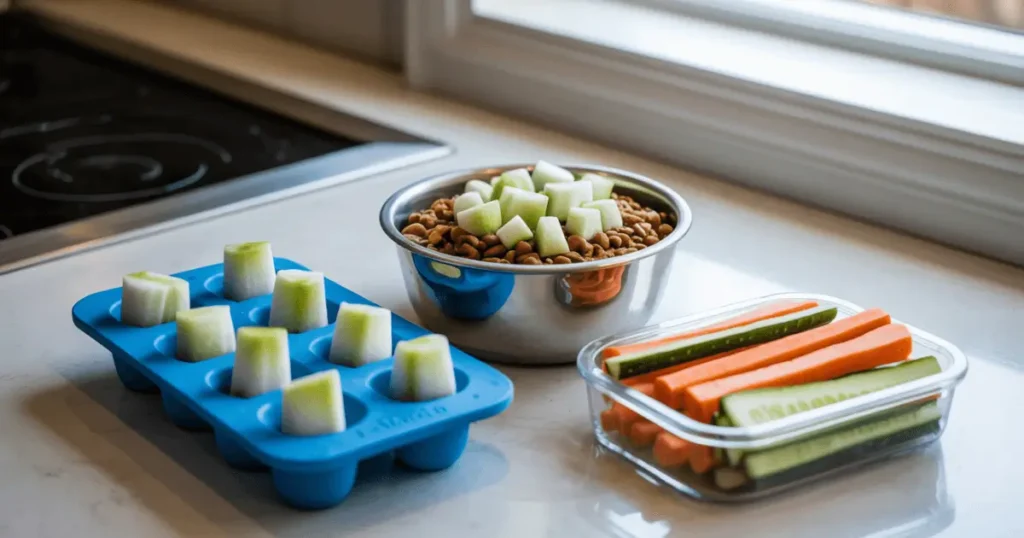
There are several ways to incorporate jicama into your dog’s diet:
Raw Jicama Treats
The most common way to offer jicama for dogs is raw, after proper peeling and cutting:
- As training treats (small pieces)
- As a refreshing snack on hot days
- Mixed with other dog-safe vegetables
The crunchy texture makes it an engaging treat that many dogs enjoy.
Frozen Jicama
For a cooling summer treat:
- Cut peeled jicama into appropriate sizes
- Freeze for a few hours
- Offer as a refreshing cold treat
This can be particularly beneficial during hot weather or for teething puppies (under supervision).
Food Topper
Finely diced or grated jicama can be added to your dog’s regular food:
- Adds moisture to dry kibble
- Introduces additional fiber
- Provides textural variety
This can be especially appealing to picky eaters who need encouragement to eat their regular food.
How Much Jicama Can Dogs Eat?
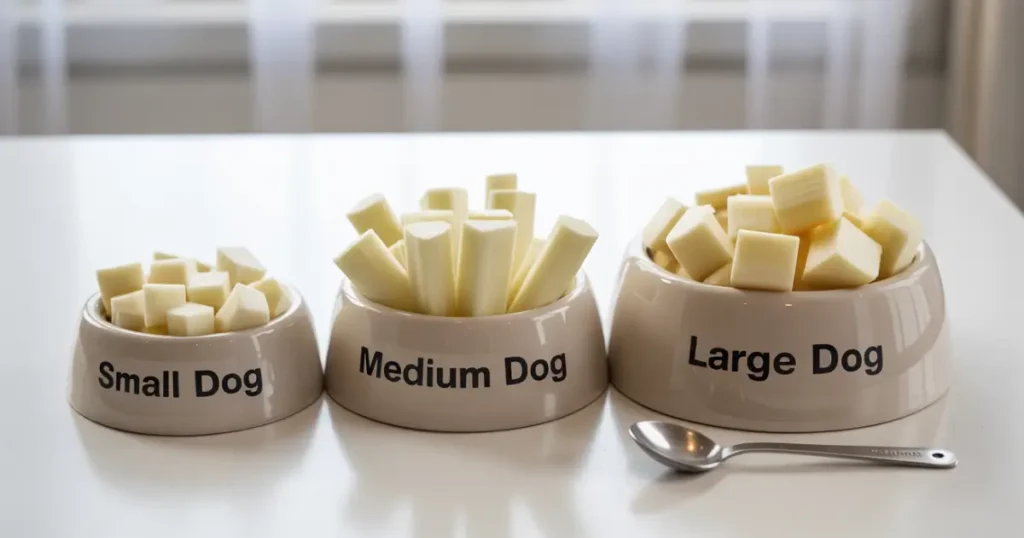
When introducing any new food to your dog’s diet, moderation is essential. Here are general guidelines for jicama portions:
| Dog Size | Maximum Jicama Serving | Frequency |
|---|---|---|
| Small (under 20 lbs) | 1-2 small pieces or 1 teaspoon | 1-2 times per week |
| Medium (20-50 lbs) | 1-2 tablespoons | 1-2 times per week |
| Large (over 50 lbs) | 2-3 tablespoons | 1-2 times per week |
Remember that treats, including vegetables like jicama, should make up no more than 10% of your dog’s daily caloric intake, with the remaining 90% coming from nutritionally complete dog food.
Potential Risks of Jicama for Dogs
While the flesh of jicama is generally safe, there are some considerations when determining is jicama safe for dogs in your specific situation:
Choking Hazard
Like many crunchy vegetables, jicama can pose a choking risk, particularly for dogs who gulp their food without chewing properly. Always cut jicama into appropriate sizes and supervise your dog while they’re enjoying this treat.
Digestive Upset
Some dogs with sensitive stomachs may experience digestive upset when introduced to new foods, including jicama. Symptoms might include:
- Mild diarrhea
- Gas
- Stomach gurgling
- Vomiting (rare, but possible)
Starting with very small amounts can help minimize this risk.
Toxic Plant Parts
Rotenone, which is toxic to dogs, is found in the skin, seeds, stems, leaves, and beans of the jicama plant, as has been underlined numerous times. Symptoms of rotenone poisoning include:
- Respiratory distress
- Vomiting
- Diarrhea
- Weakness
- In severe cases, it can be fatal
This is why proper preparation is absolutely essential when offering jicama to dogs.
Individual Allergies
An allergic reaction to jicama is uncommon, but it can happen to some dogs. Signs of food allergies in dogs include:
- Itching or skin irritation
- Ear infections
- Gastrointestinal upset
- In severe cases, facial swelling or difficulty breathing
If you notice any of these symptoms after introducing jicama, discontinue feeding it and consult your veterinarian.
Signs Your Dog May Not Tolerate Jicama Well
Watch for these indicators that jicama might not be the right treat for your particular dog:
Immediate Signs
- Reluctance to eat or spitting out the jicama
- Excessive drooling after consumption
- Pawing at the mouth or face
- Vomiting shortly after eating
Delayed Signs
- Diarrhea within 24 hours of consumption
- Excessive gas or stomach gurgling
- Lethargy or unusual behavior
- Decreased appetite
If you notice any of these signs, jicama may not be a good fit for your dog’s individual digestive system.
Comparing Jicama to Other Vegetables for Dogs
When evaluating whether is jicama good for dogs compared to other vegetables, consider these comparisons:
| Vegetable | Benefits | Considerations | Compared to Jicama |
|---|---|---|---|
| Carrots | Vitamin A, dental benefits | Higher in sugar | More widely used, sweeter |
| Cucumber | Very hydrating, very low calorie | Fewer nutrients | Similar crunch, more moisture |
| Sweet Potatoes | High in vitamins, filling | Higher in calories, must be cooked | More caloric, less crunch |
| Green Beans | Lean protein, low calorie | Some dogs dislike texture | More fiber, less crunch |
| Celery | Low calorie, dental benefits | Stringy texture | Similar crunch, different nutrient profile |
Jicama offers a unique combination of crunch, hydration, and fiber that makes it a good option to rotate with these other vegetables in your dog’s treat routine.
Unlike jicama, which is a root vegetable, seaweed offers unique ocean-based minerals that can complement a dog’s diet.
While jicama can be safely given to dogs raw, veggies like artichokes need to be fully cooked first to make them safe for your pup to eat.
Jicama for Dogs with Special Considerations
Diabetic Dogs
The low glycemic index and high fiber content of jicama make it a relatively good option for diabetic dogs, but always consult your veterinarian before introducing any new foods to a dog with diabetes.
Overweight Dogs
Jicama’s low calorie content, combined with its satisfying crunch, makes it an excellent treat option for dogs on weight management plans.
Dogs with Kidney Issues
The high water content and relatively low phosphorus levels in jicama can make it an appropriate treat for some dogs with kidney disease, but always check with your veterinarian first.
Senior Dogs
The crunchy texture can be appealing and may offer some dental benefits, but for seniors with dental issues, you might need to cut jicama into smaller, thinner pieces for easier chewing.
Key Takeaways About Jicama for Dogs
- Can dogs eat jicama? Yes, but only the properly peeled flesh
- Is jicama safe for dogs? The flesh is safe when peeled completely; all other parts are toxic
- Is jicama good for dogs? In moderation, it provides fiber, hydration, and nutrients
- Can dogs have jicama regularly? Occasional servings (1-2 times weekly) are best
- It is essential to prepare properly; the skin must be totally removed.
- Start with small amounts and monitor for individual tolerance
- Cut into appropriate sizes to prevent choking
Conclusion
So, can dogs eat jicama? Yes, the white flesh of properly peeled jicama can be a healthy, low-calorie treat option for most dogs. Its crunchy texture, hydrating properties, and fiber content make it a beneficial addition to your pet’s treat rotation when prepared and served correctly.
However, the critical safety considerations around removing all skin and avoiding the toxic parts of the plant cannot be overstated. When asking “Is jicama safe for dogs?” the answer is conditional upon proper preparation.
As with any treat, moderation is essential, and jicama should complement—not replace—a nutritionally complete dog food diet. By following the guidelines in this article, you can safely introduce this refreshing vegetable to your canine companion’s diet and add some healthy variety to their treat options.
For more information about other vegetables that are safe and beneficial for your dog, check out our comprehensive guide on what fruits and vegetables can dogs eat.
Frequently Asked Questions
Can puppies eat jicama?
Puppies can eat very small amounts of properly prepared jicama, but with extra caution. Their digestive systems are more sensitive than adult dogs, and they may be more prone to choking. If offering jicama to a puppy, ensure it’s cut into very small, thin pieces, and introduce it in tiny amounts. For puppies under six months, it’s generally best to stick with their regular puppy food and treats specifically formulated for growth and development.
What if my dog accidentally eats jicama skin?
If your dog consumes a small amount of jicama skin, monitor them closely for any signs of digestive upset or adverse reactions. Small amounts may cause mild stomach upset but are unlikely to be fatal. However, if your dog consumes larger amounts of skin or other parts of the jicama plant (leaves, stems, or seeds), contact your veterinarian or pet poison hotline immediately, as these parts contain toxic compounds that could cause serious issues.
How can I tell if my dog likes jicama?
Your dog’s reaction to jicama will tell you if they enjoy it. Signs of enjoyment include eagerly taking the treat, chewing happily, and looking for more. Some dogs may be hesitant at first due to the unique texture and mild flavor. If your dog seems uncertain, you can try offering a very small piece with a tiny amount of peanut butter (xylitol-free) to increase appeal. Not all dogs will enjoy jicama, and that’s perfectly fine – there are plenty of other healthy treat options to explore.
Can jicama help clean my dog’s teeth?
While jicama’s crunchy texture may provide some mechanical cleaning action on your dog’s teeth, it shouldn’t replace proper dental care. The chewing action can help scrape away some soft tartar and stimulate the gums, but regular tooth brushing and professional dental cleanings are still necessary for optimal dental health. Consider jicama a complement to, not a replacement for, proper dental hygiene practices.
Can I mix jicama with other vegetables for my dog?
Yes, jicama can be combined with other dog-safe vegetables to create a varied and nutritious treat mix. Good options to mix with jicama include small pieces of carrots, cucumber, or green beans. This combination provides different nutrients and textures that can be appealing to your dog. Regardless of the type, keep in mind that the 10% rule still applies: treats should not account for more than 10% of your dog’s daily caloric intake.

